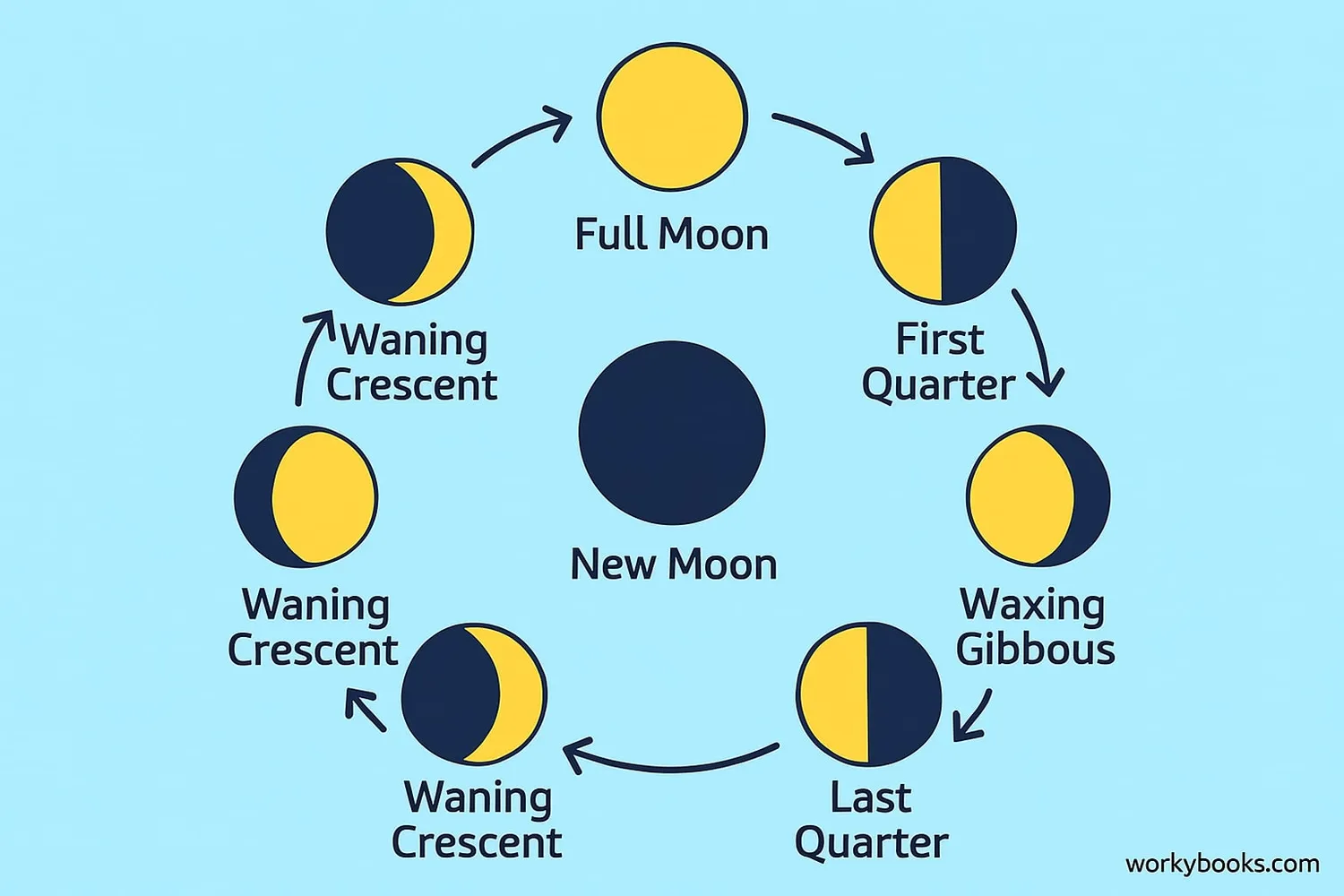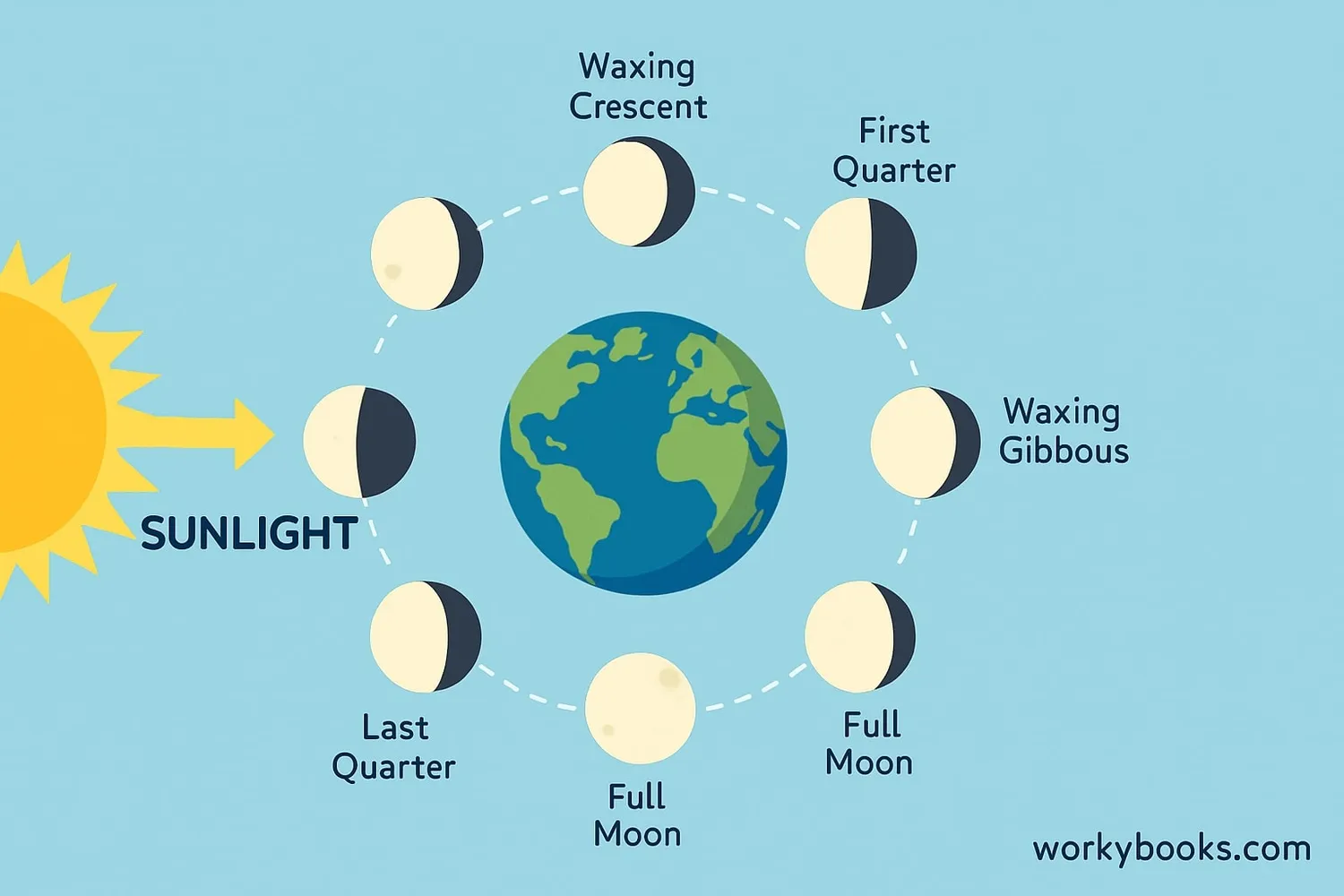Phases of the Moon - Definition, Examples, Quiz, FAQ, Trivia
Discover how the moon changes shape throughout its monthly cycle
What are Moon Phases?

Moon phases are the different shapes of the moon that we see from Earth throughout its monthly orbit. These changing appearances happen because:
• The moon doesn't produce its own light - it reflects sunlight
• We see different portions of the moon's sunlit side as it orbits Earth
• The moon takes about 29.5 days to complete one cycle of phases
The main phases are: New Moon, Waxing Crescent, First Quarter, Waxing Gibbous, Full Moon, Waning Gibbous, Last Quarter, and Waning Crescent.
Moon Fact!
The word "month" comes from "moonth" - the time it takes for the moon to complete its cycle of phases!
How Moon Phases Occur

Moon phases occur because of three key factors:
1. The moon orbits Earth approximately every 29.5 days
2. The moon doesn't produce its own light - it reflects sunlight
3. As the moon orbits Earth, we see different portions of its sunlit side
The changing angles between the Earth, moon, and sun create the different shapes we observe. When the moon is between Earth and the sun, we see the unlit side (New Moon). When Earth is between the moon and sun, we see the fully lit side (Full Moon).
New Moon
The moon is between Earth and sun. The dark side faces Earth.
Waxing Phases
Moon appears to grow larger each night (waxing)
Full Moon
Earth is between moon and sun. Entire sunlit side is visible.
Waning Phases
Moon appears to shrink each night (waning)
Moonlight Mystery!
Even during a "New Moon" when we can't see the moon, it's still there! We just see its dark side facing Earth.
The Lunar Cycle
The complete cycle of moon phases takes about 29.5 days and is called a lunation or lunar month. Let's examine the eight main phases:
Moon is not visible from Earth
Small sliver of moon visible
Right half of moon illuminated
More than half illuminated
Entire moon visible
More than half illuminated
Left half of moon illuminated
Small sliver visible before new moon
Waxing means the moon appears to grow larger each night. Waning means it appears to shrink. The moon is always half illuminated by the sun - what changes is how much of that illuminated half we can see from Earth.
Moon Watching Tip
Notice that the crescent moon always points away from the sun. During evening, a waxing crescent will have the curve on the right.
Moon Phases Quiz
Test your moon knowledge with this quiz! Answer all 5 questions to see how much you've learned.
Frequently Asked Questions
Here are answers to common questions about moon phases:
Moon Trivia
Discover some amazing facts about Earth's moon:
Moon Size
The moon is about 1/4 the diameter of Earth. If Earth were a basketball, the moon would be about the size of a tennis ball!
Moon Gravity
The moon has only 1/6 of Earth's gravity. If you weigh 60 pounds on Earth, you would weigh just 10 pounds on the moon!
Extreme Temperatures
Moon temperatures range from 260°F (127°C) during the day to -280°F (-173°C) at night. There's no atmosphere to moderate temperatures.
Lasting Footprints
Because there's no wind or water on the moon, the footprints left by Apollo astronauts will remain visible for millions of years!





